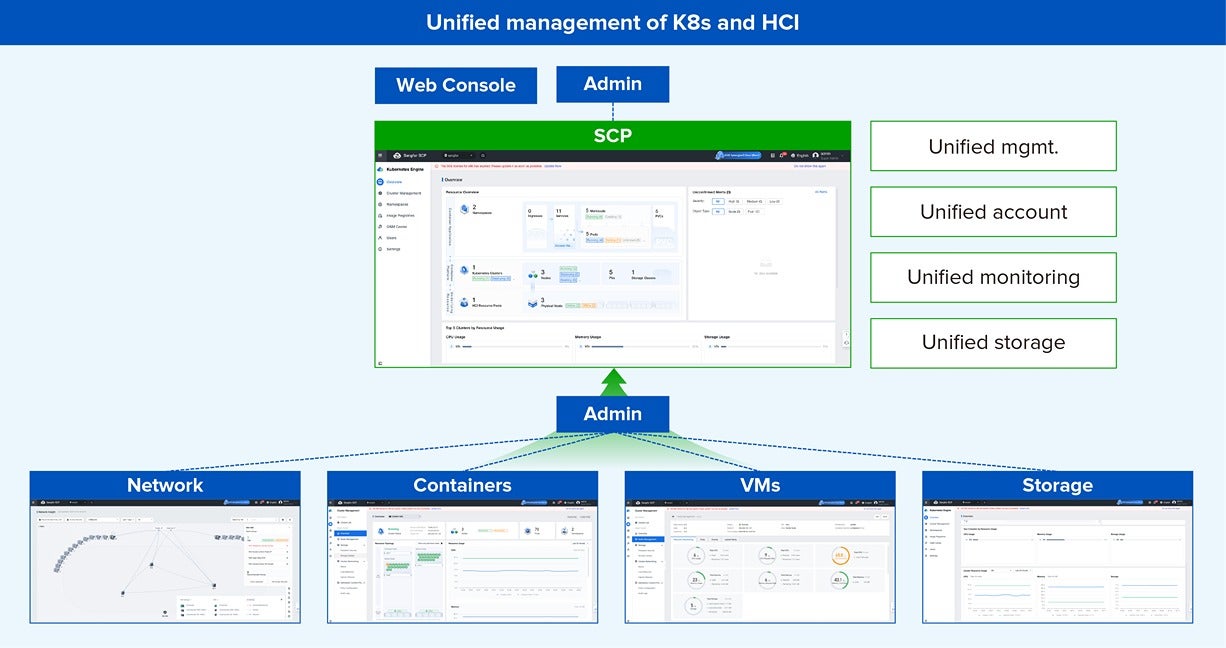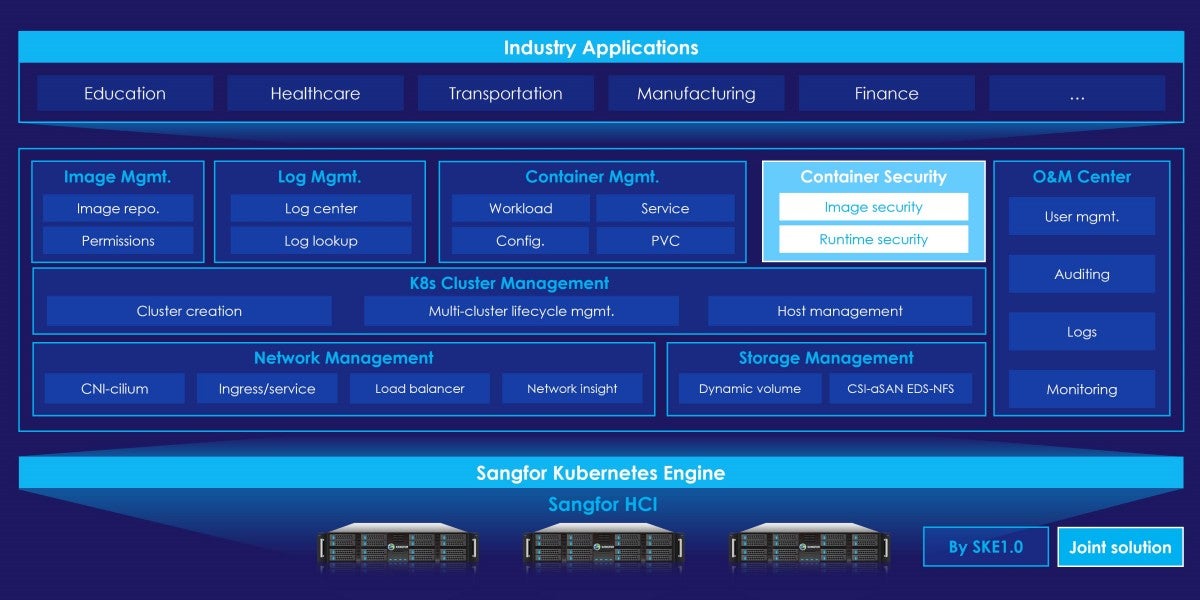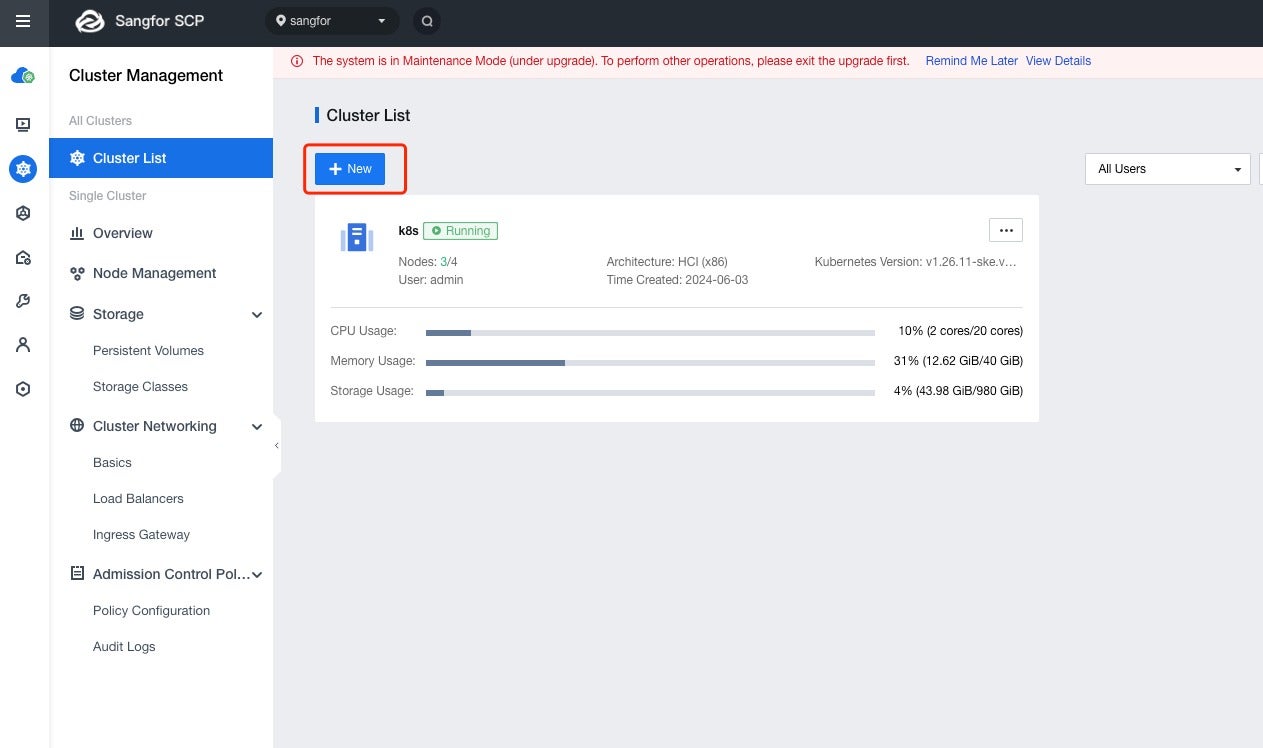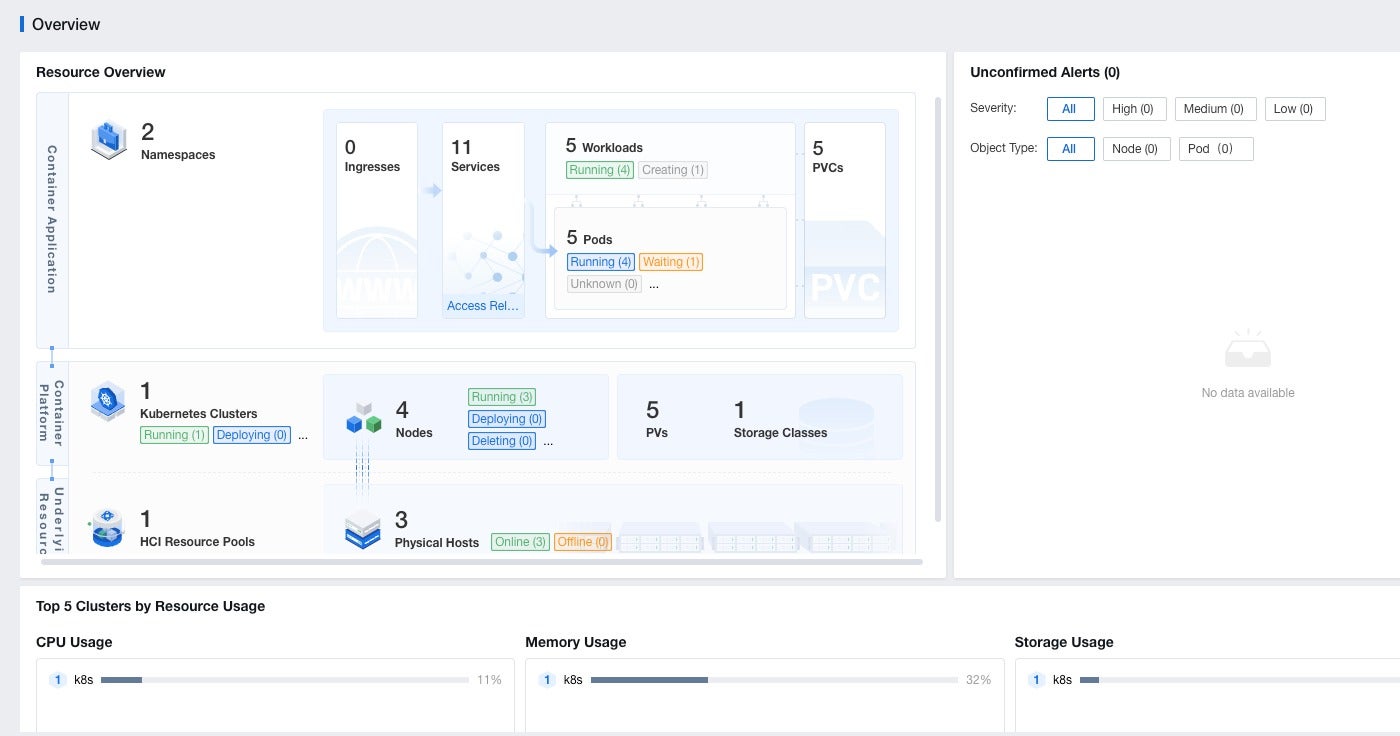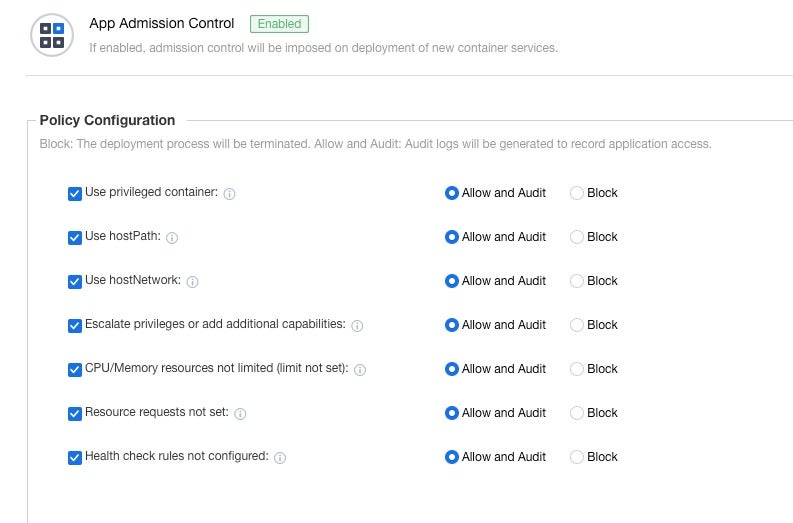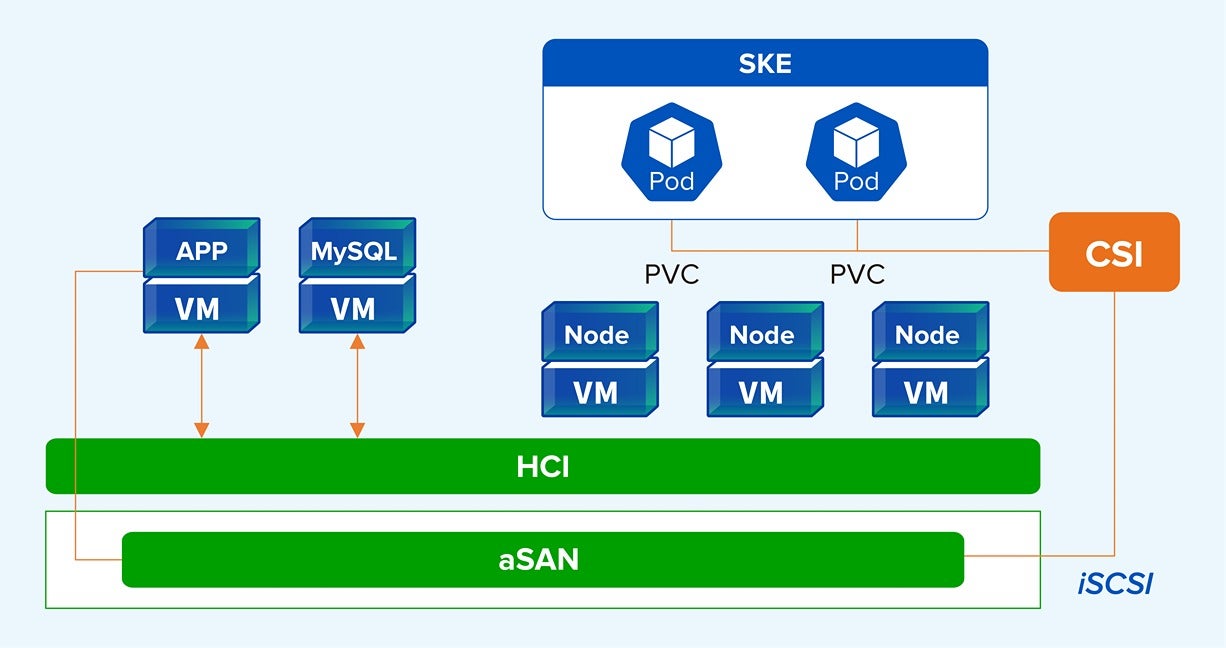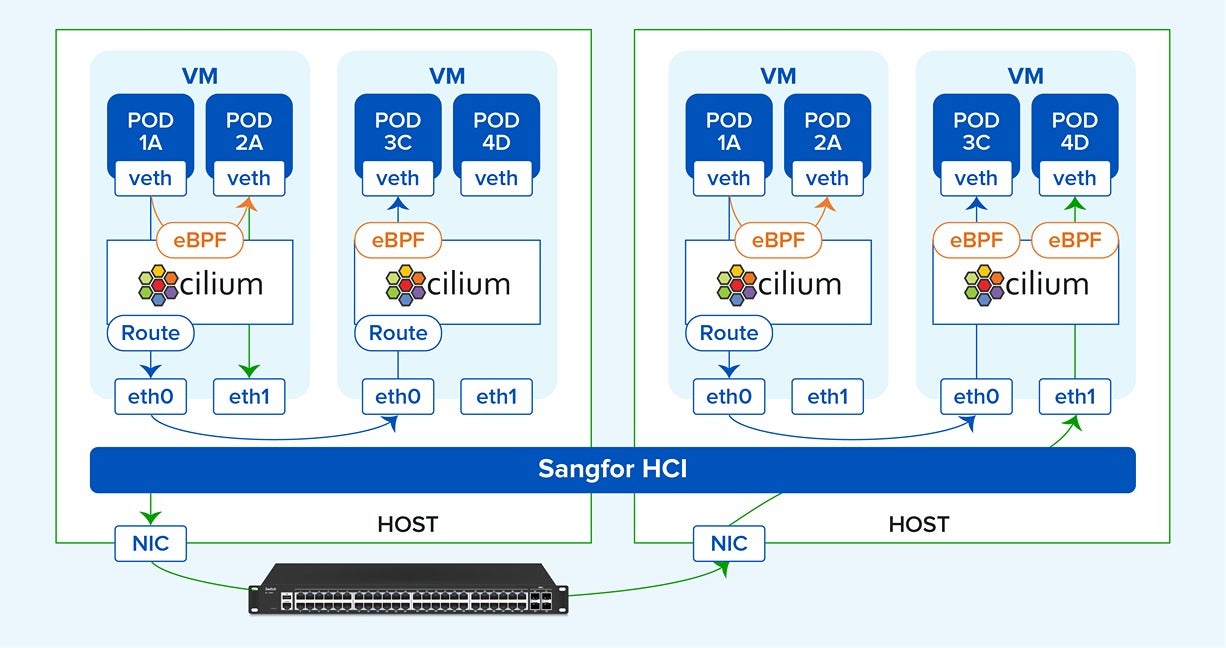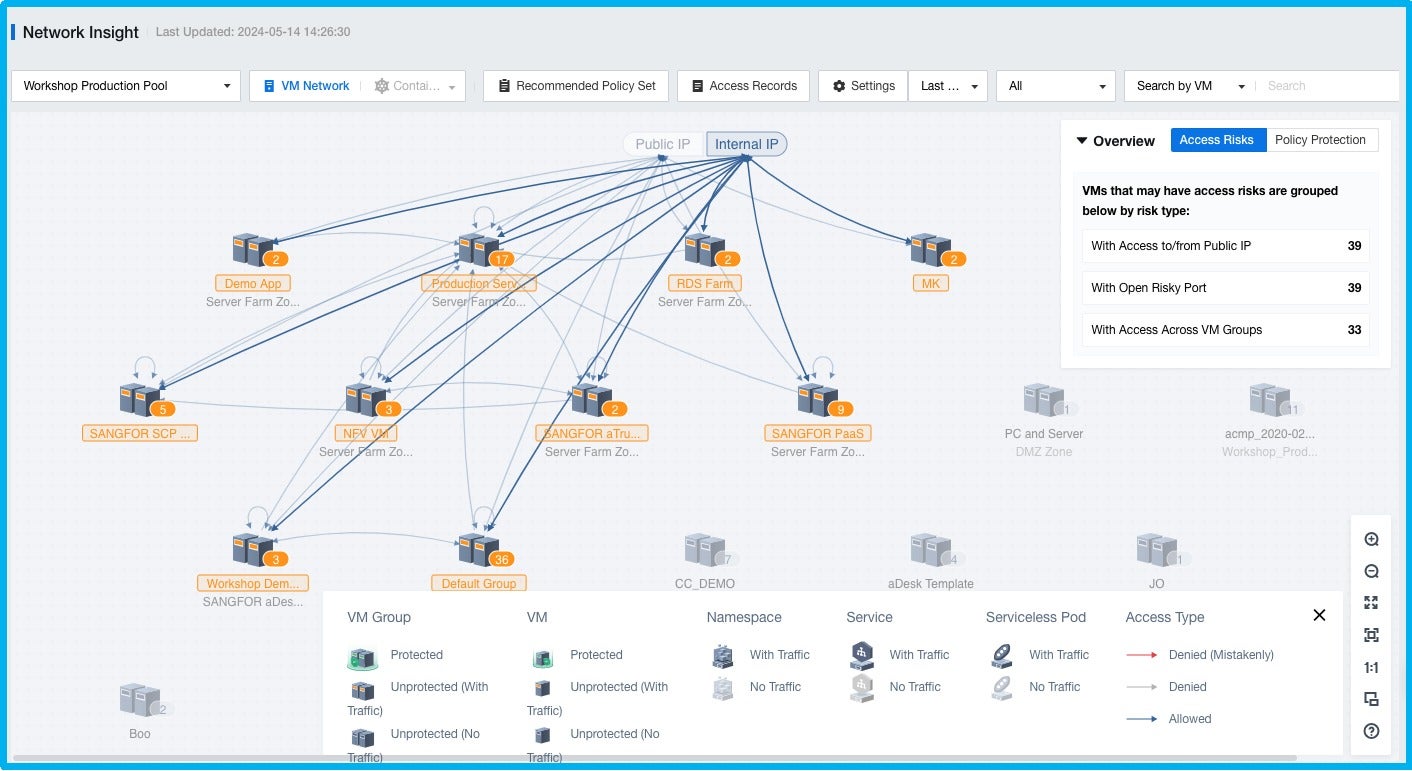Containers and virtual machines will coexist in the infrastructure in the long term, as managing them separately is inefficient.
By integrating SKE with Sangfor HCI, users benefit from the unified management of containers and virtual machines. This includes centralized management of accounts, permissions, monitoring, and alerts, significantly improving overall management efficiency.
